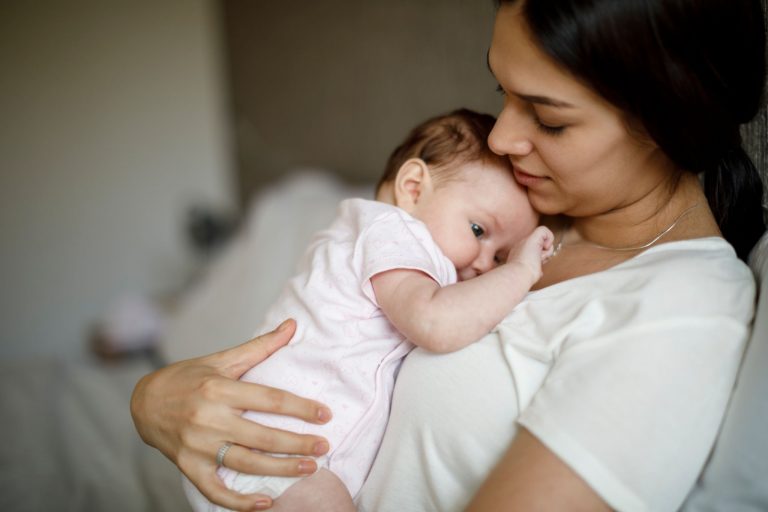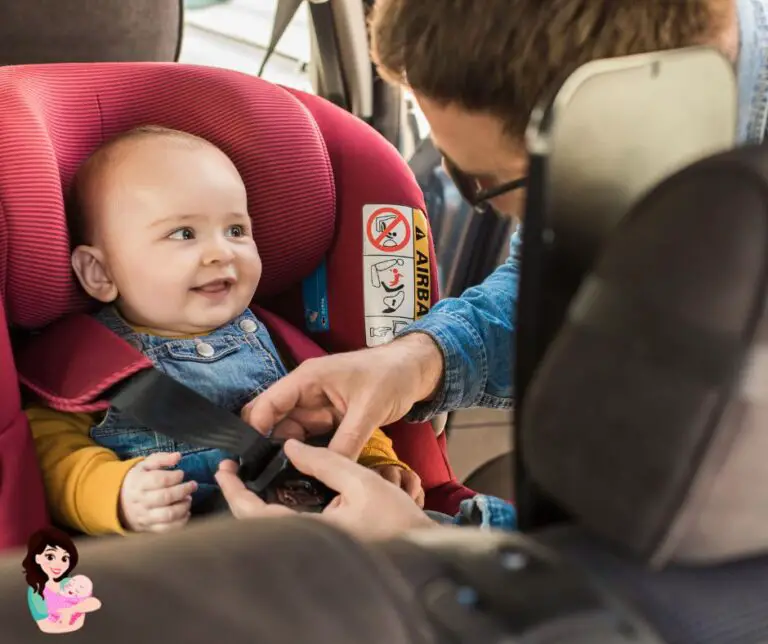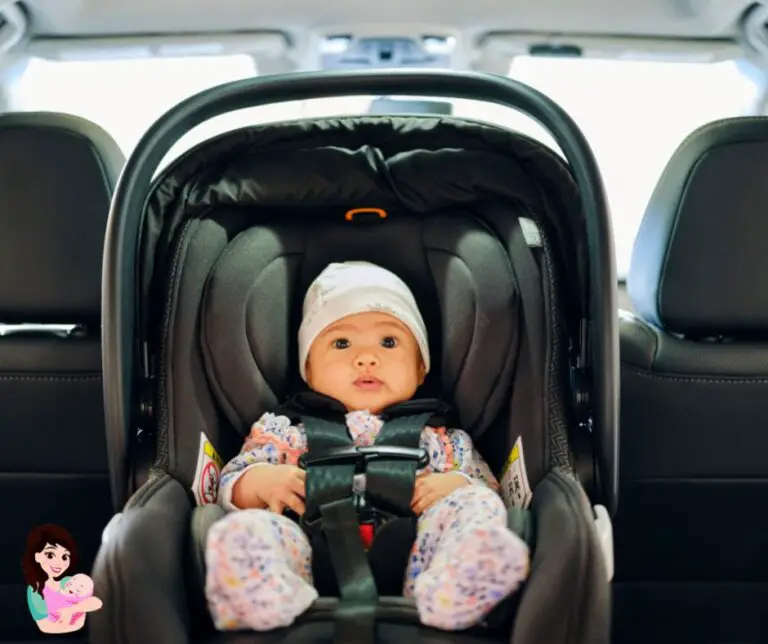
As a young parent, it’s difficult to find answers to your parenting questions. You’ve probably heard repeatedly that it is unsafe for babies to sleep on their parents’ chests. But you wonder if that is true or not. Let’s face it, you can’t always carry a child while standing. You need to maintain a position that is both comfy for you and your baby.
There is no evidence to support any harm associated with babies sleeping on their parents’ chests. Some mothers worry that it’s not safe for their babies to sleep on their chests, but there is no evidence to support this. It’s a common parenting practice to have your baby sleep on your chest. It fosters a kind of bond with the parent.
Why Do Babies Like to Sleep on Their Parents’ Chests?
Babies like to sleep on their parents’ chests for many reasons. In the first few months of life, babies need to be held constantly because they can’t move around as well as older children and adults. Holding your baby close helps them feel safe and secure while also allowing them to learn about the world around them through touch, sound, and smell.
The benefits of skin-to-skin contact are many for both parents and infants: It can help regulate your baby’s temperature, heart rate, and blood pressure; it stimulates brain development; it helps with breastfeeding; it just feels good for both parties involved (and can even help calm an anxious baby).
Benefits of Baby Sleeping On Your Chest
Here are some benefits of a baby sleeping on your chest:
1. Better sleep for mom and baby
Co-sleeping can make both mom and baby sleep better at night. The closeness between mother and child helps them feel more secure at night, which reduces anxiety for both parties involved.
2. Safer environment for your baby
Babies who share a bed with their parents are less likely to die from SIDS than those who sleep alone in another room or crib. This is because when they share a bed with you, it creates a safer environment for them since they don’t have access to anything dangerous while they’re sleeping. Dangerous items such as pillows or blankets could suffocate them if they roll onto them during the night.
3. Boosts Oxytocin
Oxytocin is a hormone that helps to create feelings of love and bonding. It’s often referred to as the “love hormone” because it’s released during moments of intimacy and can help us feel closer to our partner. When breastfeeding, oxytocin is released in both mom and baby, creating a strong bond between them. While co-sleeping with your baby won’t give you the same amount of oxytocin as breastfeeding, it still has some positive effects on your body.
4. Promotes Bonding
When your baby is in bed with you, they are close enough for skin-to-skin contact. Skin-to-skin contact enhances the bonding between mother and child by creating an intimate environment that promotes closeness and comfort. Research shows that babies who slept on their mothers’ chests had higher levels of oxytocin than those who slept alone or in their beds.
5. Helps With Breastfeeding
When you’re breastfeeding, it’s important to have a good latch so that baby is getting as much milk as possible. This can be hard in the beginning when you’re learning how to position your baby and get a good latch. Having a baby sleep on your chest helps with this because it makes it easier for both you and your baby to find the correct position for breastfeeding.
6. Makes the Husband Feel More Involved
When babies start sleeping on their mom’s chest, dads feel left out. If your husband is concerned about not being able to help with breastfeeding, having the baby sleep on his chest will make him feel more involved with the process. It will also give him a chance to bond with his baby in a very special way that only fathers can share.
Why Can’t Babies Sleep on Parents’ Chests?
The following are the possible danger that may arise from babies sleeping on their parents’ chests:
1. SIDS (sudden infant death syndrome)
SIDS is still a mystery, but one of the theories is that the weight and warmth of the parent’s body may help keep the baby from breathing in any noxious gases. We have suggested that this position may also cause shallow breathing because the parent’s chest covers the baby’s nose and mouth.
2. You may smother your baby if you fall asleep
This is a serious risk, as babies are very vulnerable to being smothered by pillows, bedding, or even their own parents’ bodies. Babies who sleep face down on their stomachs are especially at risk for suffocation. If you’re a side sleeper and roll onto your back while sleeping, there’s a chance that the baby could suffocate under your arm or head. This risk is higher if you’re overweight or have high blood pressure.
3. The baby may get too accustomed
Babies learn by doing things over and over again, so if they always sleep on their parents’ chest, they might not learn how to fall asleep on their own in other places like cribs or bassinets. They may get too accustomed to sleeping close to another human being, which could lead to separation anxiety when they are separated from their parents during the day or night. This can also cause problems during naps or nighttime sleep when the baby is not near mom or dad.
Alternatives to Letting a Baby Sleep on Your Chest
If you are looking for an alternative to letting your baby sleep on her chest, then there are several options available.
1. Swaddling
Swaddling (a technique used by many parents) involves wrapping babies in a tight blanket so that they cannot move their arms or legs. It has been shown to have many benefits, including helping babies sleep longer and more deeply, reducing crying and fussing, and helping them feel secure. If your baby is swaddled, she will feel secure in the same way she would if you were holding her. The key is to make sure you’ve wrapped your baby correctly.
2. Using in-bed co-sleeper
These products are designed with the same purpose as bedside sleepers. They’re meant to keep babies close while they sleep. However, they include mesh sides so that air can circulate freely around the baby’s head, keeping them cool and comfortable during the night.
Some models also come with a bassinet attachment so that you can move your little one into their room once they outgrow their bassinet (typically around 3 months). You can also use this device for naps throughout the day.
3. Rock-n-play
The Rock-n-Play is a simple solution to help your baby sleep. It’s a cradle that rocks back and forth, so it’s easy for them to fall asleep in it. It also has multiple incline positions for different stages of growth.
The Rock-n-Play also has an adjustable canopy that helps block out light and noise, which can make it easier for your baby to sleep. The rock-n-play is a portable crib that can be used anywhere.
It’s designed to help babies who have problems sleeping, including those who have colic or reflux, or who are premature or have low muscle tone. It has a swinging motion that mimics the feeling of being in the womb.
4. Sleep training
Sleep training is a method of teaching your baby to fall asleep on his own at bedtime and when he wakes up in the middle of the night. It involves letting him cry for short periods until he learns to put himself back to sleep on his own without needing you by his side every step of the way.
Sleep training isn’t just for babies that are 8 months old or older. You can start sleep training as soon as you feel she is big enough to start sleeping alone, especially if you’re having trouble getting him or her to sleep at night already (or during naps)
5. Use a heartbeat-imitating device
Babies tend to get comfy listening to their parents’ heartbeats when they lie on their chests. Instead, switch to heartbeat-imitating devices. These devices emit a steady, audible heartbeat that helps soothe babies and promote sleep.
They come in different models and sizes, so you can choose one that fits your needs. Some models also include soothing sounds and white noise to help lull babies to slumber.
Is It Ok for Baby to Sleep on Tummy on My Chest?
Babies can sleep on their tummies. But it’s not safe for them to sleep on their tummy until they’re at least 6 months old and able to lift their head on their own. But some doctors think that it’s OK for babies who are at least 3 months old and weigh more than 4 pounds to sleep on their tummies, as long as they’re propped up in what’s called a “tummy time” position.
How Long Should I Let My Baby Sleep on My Chest?
If your baby falls asleep in your arms, it’s tempting to keep them there. But experts say they should be back in their crib, bassinet, or play yard within an hour of dozing off. This is to allow babies also get accustomed to their beds or cribs.
Last Word
Ultimately, safety is what you make it. Just ensure you keep a watchful eye on your baby throughout.

Hi, This is Emma Baster; As a mom, I spend my free time caring for my kids. I’ve read a lot on the Internet to improve my childcare skill and bring the best to my kids. Eruditemommy shares my knowledge and experience through helpful posts. I hope you enjoy them!







